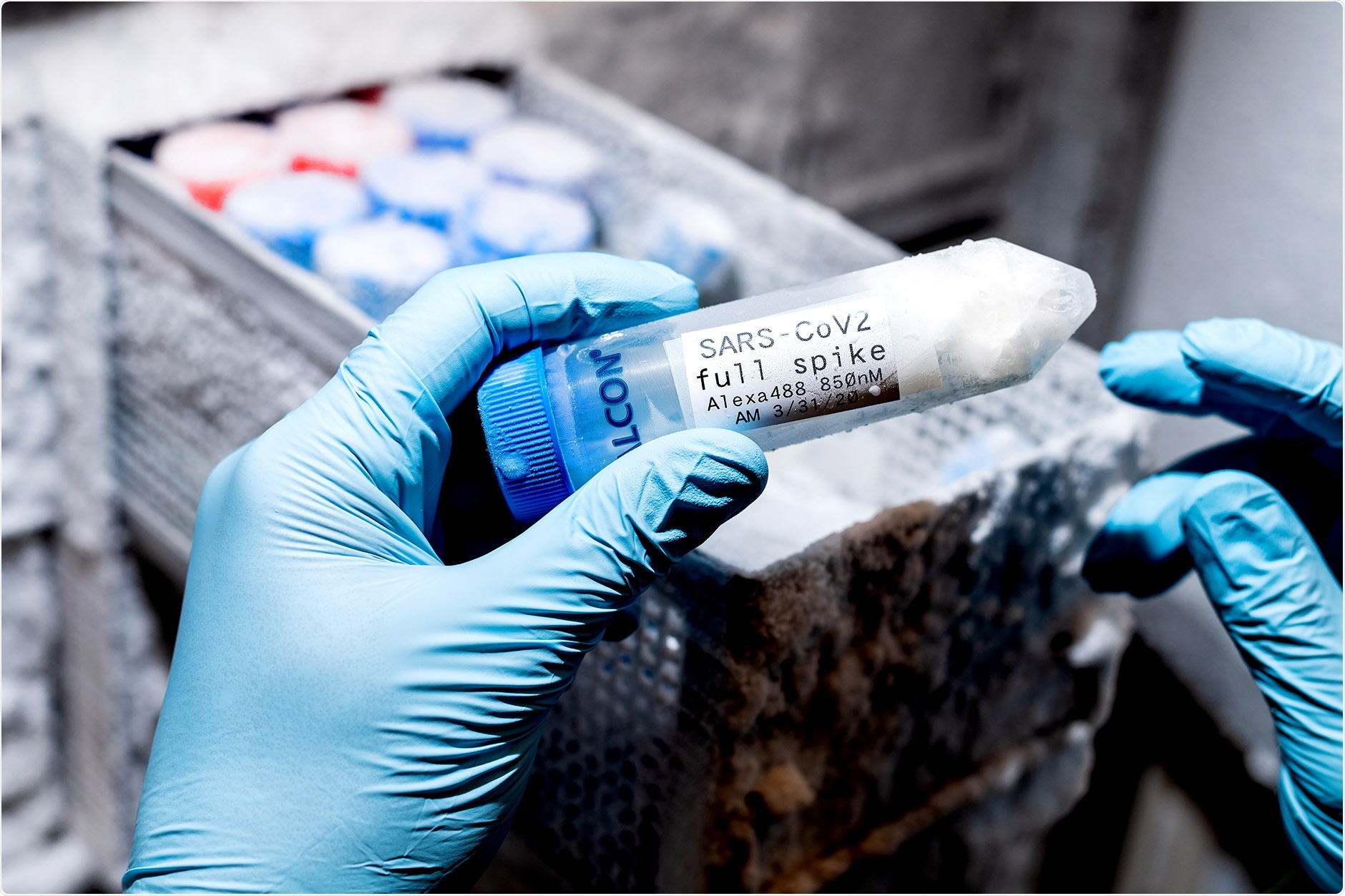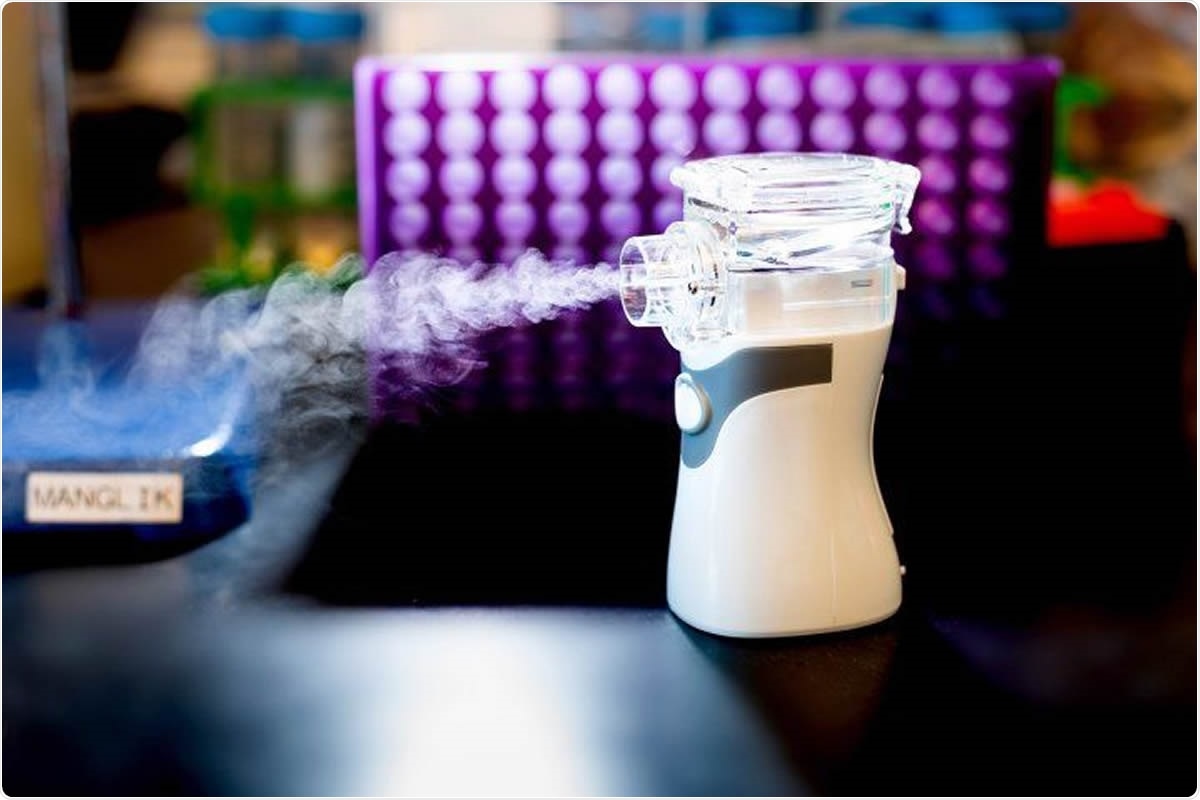Amid the coronavirus disease 2019 (COVID-19) pandemic that has so far claimed over 751,000 lives globally, the UCSF researchers have developed a synthetic aerosol preparation that can significantly inhibit the viral entry into human cells. The researchers have named the preparation ‘AeroNabs.’

UCSF researchers believed that if they could find nanobodies that impede spike-ACE2 interactions, they could prevent the virus from infecting cells. Photo by Noah Berger

 This news article was a review of a preliminary scientific report that had not undergone peer-review at the time of publication. Since its initial publication, the scientific report has now been peer reviewed and accepted for publication in a Scientific Journal. Links to the preliminary and peer-reviewed reports are available in the Sources section at the bottom of this article. View Sources
This news article was a review of a preliminary scientific report that had not undergone peer-review at the time of publication. Since its initial publication, the scientific report has now been peer reviewed and accepted for publication in a Scientific Journal. Links to the preliminary and peer-reviewed reports are available in the Sources section at the bottom of this article. View Sources
The idea behind the research
The study was inspired by the antibody-like immune mediators called nanobodies that are found in camelids, such as llamas and camels. Although function more or less like antibodies in the human immune system, nanobodies are significantly smaller in size and structurally less complex than antibodies. Because of these unique features, nanobodies are highly stable in nature and can be easily modified in the laboratory. This makes them potential candidates for bioengineering-based research.
Identification of potent nanobodies
The researchers chose the SARS-CoV-2 spike protein as the key target for identifying candidate nanobodies. The spike proteins are present on the viral surface and contain three receptor-binding domains (RBDs). With the transition of spike proteins from an inactive, closed state to an active, open state, RBDs become activated to interact with angiotensin-converting enzyme 2 (ACE2), which is a receptor present on cells lining the human respiratory tract.
The RBD-ACE2 interaction is the key for SARS-CoV-2 to enter and infect human cells and continue their lifecycle. To break the chain of infection, the researchers thought of identifying nanobodies that can actually inhibit this interaction.
Using a yeast surface-displayed library comprising more than 2 billion synthetic nanobodies, the researchers conducted a rigorous study to identify the most potent and effective candidate for developing the aerosol preparation. This led to the identification of 21 nanobodies with desirable effects.
Can this molecule provide protection from COVID-19?
Study of the efficacy of nanobodies
To investigate the mode of action of nanobodies, the researchers conducted experiments using cryo-electron microscope and observed that candidate nanobodies directly interact with RBDs of the spike protein, and thus, inhibit the RBD-ACE2 interaction.
To confirm the efficacy of nanobodies in real-life situations, Veronica Rezelj, a virologist from the Pasteur Institute, Paris, conducted experiments on the three most potent nanobodies and found that these nanobodies are extremely effective in preventing live SARS-CoV-2 from infecting human cells. These nanobodies showed potent efficacy even at very low doses.
In addition, the researchers found that out of three potent candidates, one nanobody can bind the spike protein even in its inactive conformation in which the RBDs remain in an inaccessible downstate, unable to interact with ACE2. This provides an additional level of protection against viral entry to human cells.
The researchers selected this specific nanobody to conducted a series of experiments with the notion of creating more potent antiviral preparation. Firstly, they sequentially mutated all amino acids of the nanobody that are responsible for binding the spike protein and identified two specific changes that improve the nanobody efficacy by 500-fold. Next, they employed a bioengineering approach to link three nanobodies together to form a molecular chain. This nanobody triplet was created with the notion that if one nanobody binds only one RBD of a spike protein, the other two can bind the remaining RBDs. In this way, foolproof protection can be ensured. As expected, the researchers observed that the nanobody triplet is 200,000 times more effective than a single nanobody alone.
Development of ‘AeroNabs’
Finally, the researchers conducted a series of stress tests that include exposing the nanobody triplet to high temperature, converting them into a dry powder, and subjecting them to aerosolization (aerosol formation). Although these stress tests can significantly damage most compounds, the researchers found that the nanobody triplet successfully retained its antiviral efficacy in the aerosolized form, indicating that the intrinsic characteristics of nanobodies make them stable enough to sustain a variety of stress elements.
The study findings reveal that ‘AeroNabs’ containing aerosolized nanobodies act as a strong antiviral preparation that can be easily administered via an inhaler or nasal spray. Amid the COVID-19 pandemic when the entire scientific community is fully dedicated to creating a vaccine, this aerosol-based preparation can provide robust protection against the deadly SARS-CoV-2 virus.

Due to the inherent stability of nanobodies, there was no loss of antiviral potency in the aerosolized form, suggesting that AeroNabs are a potent SARS-CoV-2 antiviral that could be practical to administer via a shelf-stable inhaler or nasal spray. Photo by Noah Berger
For conducting human clinical trials as well as large-scale manufacturing of ‘AeroNabs,’ the research team is presently discussing with commercial partners. If everything goes successful, the researchers believe that the preparation can be used as an effective prophylactic or early-stage therapeutic intervention to halt the pandemic. They also believe that ‘AeroNabs’ can be an effective alternative to individuals who do not respond to or do not get access to, SARS-CoV-2 vaccines.

 This news article was a review of a preliminary scientific report that had not undergone peer-review at the time of publication. Since its initial publication, the scientific report has now been peer reviewed and accepted for publication in a Scientific Journal. Links to the preliminary and peer-reviewed reports are available in the Sources section at the bottom of this article. View Sources
This news article was a review of a preliminary scientific report that had not undergone peer-review at the time of publication. Since its initial publication, the scientific report has now been peer reviewed and accepted for publication in a Scientific Journal. Links to the preliminary and peer-reviewed reports are available in the Sources section at the bottom of this article. View Sources
Source:
Journal references:
- Preliminary scientific report.
Schoof, M et al. An ultra-high affinity synthetic nanobody blocks SARS-CoV-2 infection by locking Spike into an inactive conformation, bioRxiv 2020.08.08.238469; doi: https://doi.org/10.1101/2020.08.08.238469
- Peer reviewed and published scientific report.
Schoof, Michael, Bryan Faust, Reuben A. Saunders, Smriti Sangwan, Veronica Rezelj, Nick Hoppe, Morgane Boone, et al. 2020. “An Ultrapotent Synthetic Nanobody Neutralizes SARS-CoV-2 by Stabilizing Inactive Spike.” Science, November, eabe3255. https://doi.org/10.1126/science.abe3255. https://www.science.org/doi/10.1126/science.abe3255.